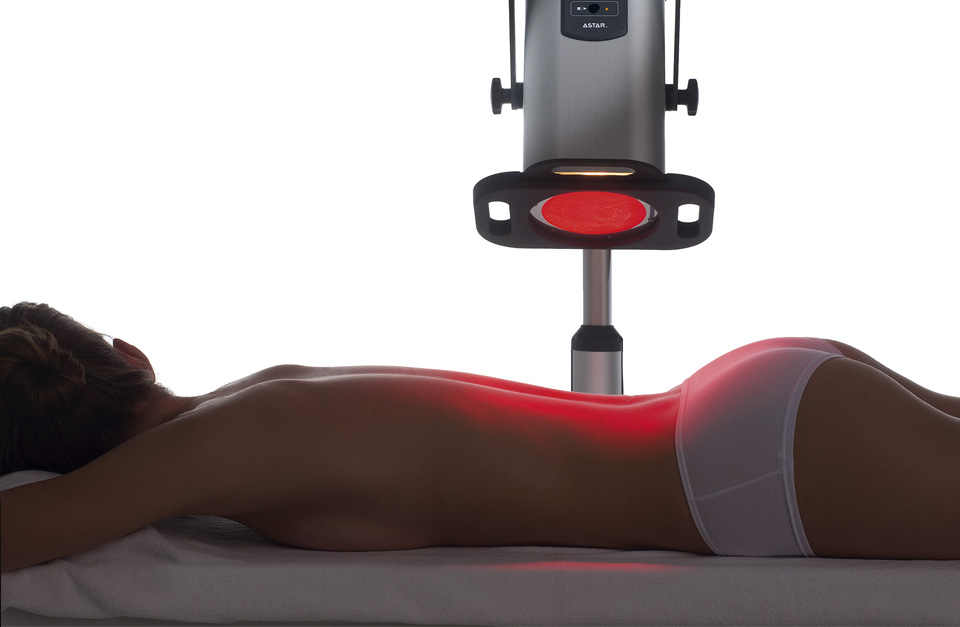Treatments using ultraviolet, visible or infrared radiation rely on irradiating the entire body or a selected area. Depending on the type of radiation used, we get other therapeutic effects. Importantly, the human eye only sees radiation waves that are in the range of 380 to 750 nm (visible light), therefore not all types of radiation are visible to us.
Lamps used in infrared therapy, differ in the power and wavelength of the emitted radiation. This therapeutic method uses colour filters that modify the parameters of the emitter and change the way it affects the body.
Infrared radiation
Infrared radiation is divided into IR-A, IR-B and IR-C
- IR-C (3000 nm – 1 mm) – infrared radiation with the longest waves and moderate thermal effect (penetrating the epidermis)
- IR-B (1400 – 3000 nm) – infrared radiation penetrating 1-3 mm deep into the tissues, moderate thermal effect (penetrating deep into the dermis)
- IR-A (760 – 1400 nm) – infrared radiation with the shortest waves and deep thermal effect (penetrating deep into the subcutaneous tissue)
Astar is a manufacturer of lamps for the exposure of infrared light in the range from IR-A to IR-B
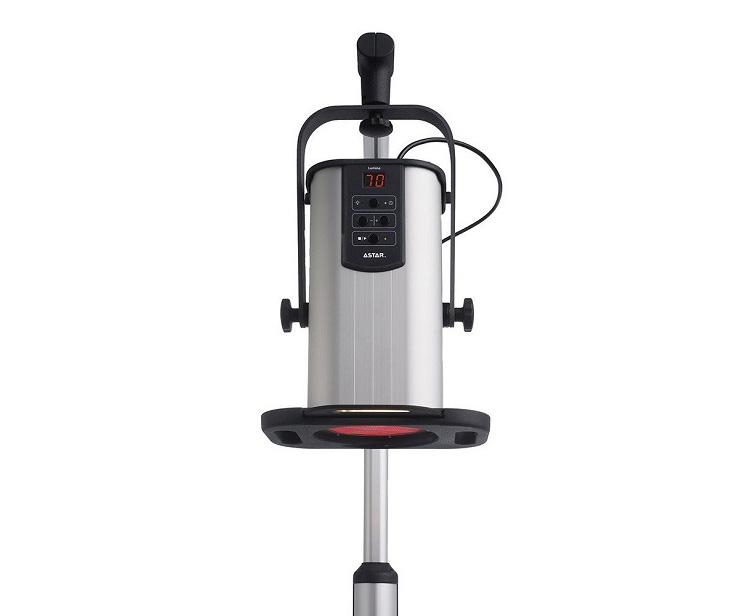
How do IR-A and IR-B help patients?
Tissue overheating occurs through radiation without direct contact and energy conduction.
Radiation in the IR-A and IR-B range effectively affects muscle relaxation and increases local blood supply. This effect translates into improved tissue nutrition and increased metabolism. The relaxation effect is very commonly used in physiotherapy centers as a preparatory phase for both therapeutic and relaxing massage.
Infrared radiation is widely used as a pre-treatment before post-isometric relaxation, joint mobilisation procedures and redressive exercises in connective tissue contractures, massage and kinesitherapy exercises. Congestion and increase in skin temperature improve its electrical conductivity, which is an indication for performing radiation treatments before electrotherapy.
The application of radiation in the IR-A range causes thermal erythema – a local reaction occurring on the skin, caused by the expansion of blood vessels. It consists of irregular redness of the skin, formed during irradiation and disappears shortly after the treatment procedure.
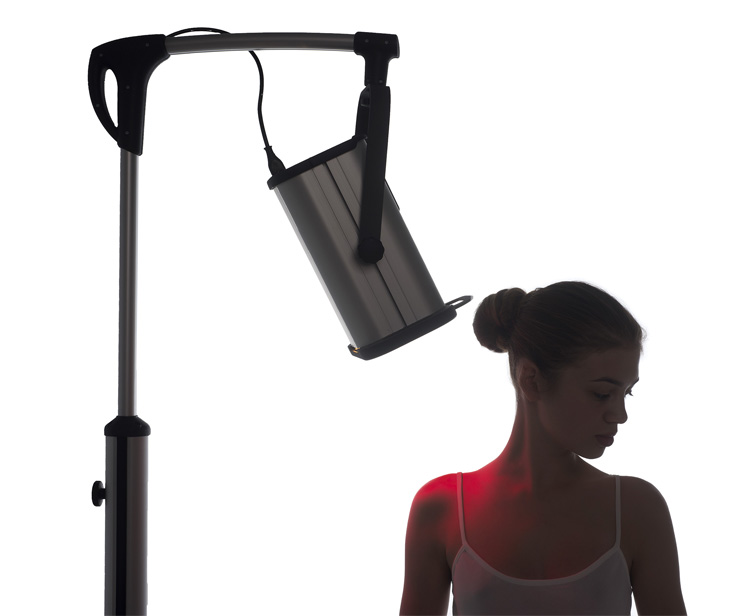
Indications and contraindications to infrared therapy.
Indications for use of IR-A:
- Muscle relaxation before manual therapy
- States of increased muscle tone
- Heating of affected joints before exercise
- Subacute and chronic inflammation of the joints
- Contractures
- Scars
- Adhesions
Indications for use of IR-B:
- Neuralgia
- Hyperesthesia
- Superficial pain
- Chronic or subacute superficial inflammation conditions
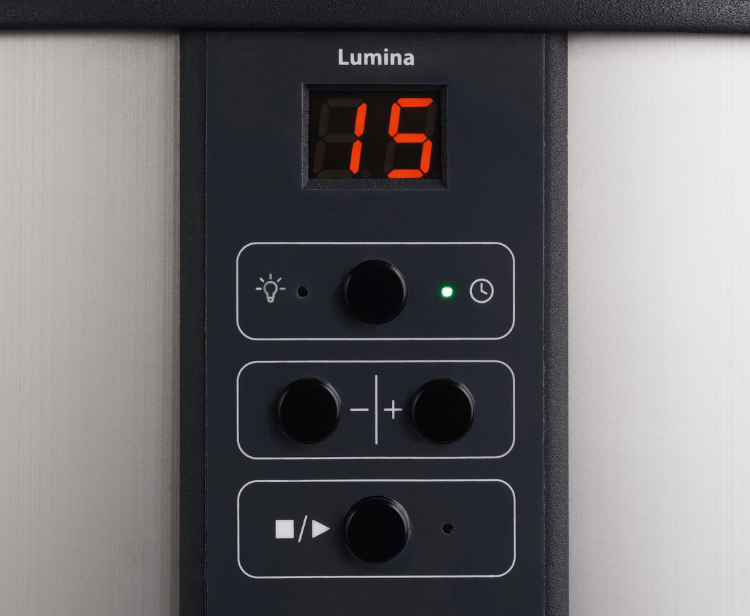
Contraindications:
- acute inflammation
- peripheral circulatory disorders
- bleeding tendency
- acute febrile diseases, including early period of common cold disease
- chronic conditions such as tuberculosis, kidney, liver disease, anemia, cancer
- epilepsy
- pregnancy
- edema of unknown etiology
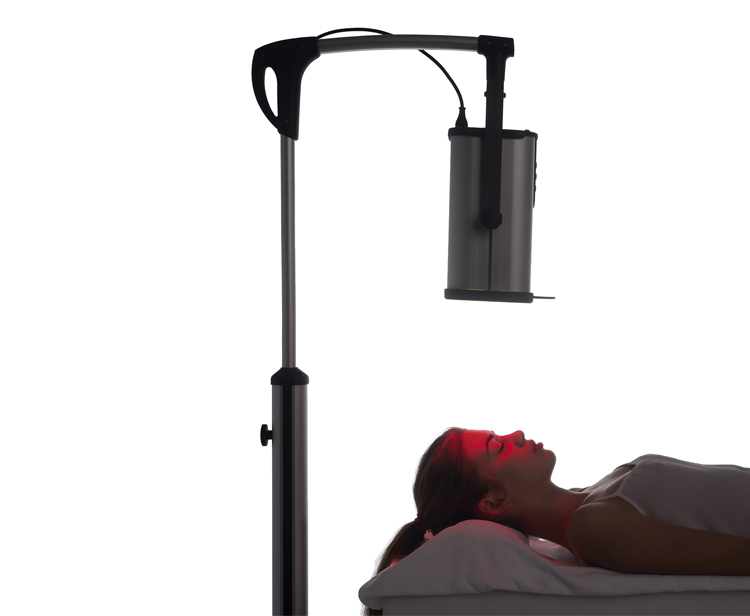
This website uses technical and functional cookies or internet analytical cookies, with your consent marketing cookies. You can read more about this in the Cookies Policy and the Information Clause. By accessing the website, you agree to them according to your browser settings. You can change them at any time, and if you do not do so, browsing the website will use these files.
